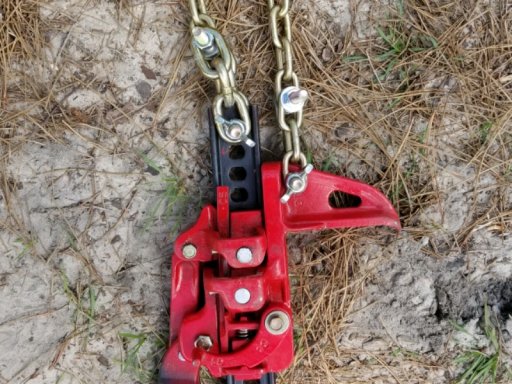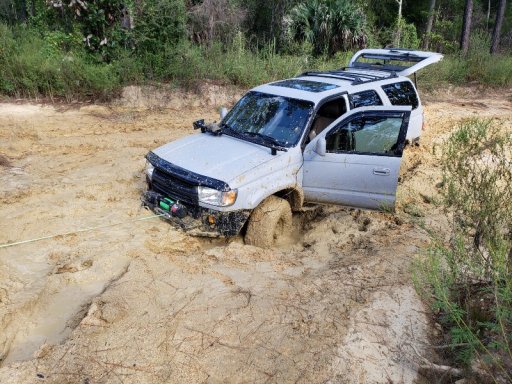Finally got a chance to snap a quick pic of how my chains attach to the jack.
View attachment 54416
I had originally experimented with several bulky nose attachments, and for a while ended up settling on reinforcing the wheel-lifting attachment (the Lift-Mate). However, because the lifting vector was a good 5-6 inches from the jack beam, it resulted in a lot of extra and unnecessary torques. Experimenting with nose attachments that put the lifting chain closer to the beam resulted in unwieldy hunks of metal.
I ended up just crunching numbers to figure out how safely I could simply drill a hole through the web of the lifting nose to mount the chain directly.
I calculate a minimum of 15,000 lb of force to tear the bolt out of the web, with 12,000lb required to start stretching the hole . The Gr8 7/16 bolt holding the chain has a shear strength of 13,500lbs. As discussed, the (minimum) breaking strength of the chain is 12,600 lbs, and the jack itself is designed to prevent forces over 7,000 lbs (which again would take 265lb of force on the end of the handle ;) ).
Interestingly, while the factory elongated hole toward the tip of the nose is not rated for loads, approximating the hole dimensions and specs I get about 10,000lbs to tear a bolt out of it.







